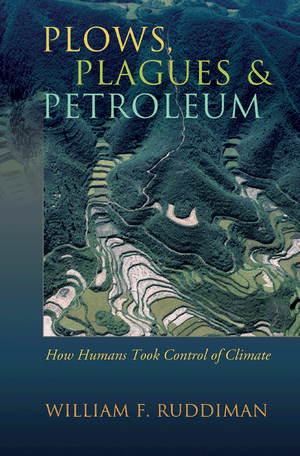 The drive for agricultural efficiency is driving the loss of the capacity for agriculture to cope with shocks and adapt to future change. This pattern fits that general pattern of the pathology of natural resource management that Buzz Holling has described previously.
The drive for agricultural efficiency is driving the loss of the capacity for agriculture to cope with shocks and adapt to future change. This pattern fits that general pattern of the pathology of natural resource management that Buzz Holling has described previously.
The FAO, in collaboration with the International Livestock Research Institute (ILRI) and other groups, surveyed farm animals in 169 countries, to produce a report of global livestock diversity “The State of the World’s Animal Genetic Resources.” This report shows that many local varieties of livestock are declining due to the promotion of common varieties.
Nature News has an article on the FAO report Local livestock breeds are dying out as commercial breeds sweep the world.
Many of the world’s indigenous livestock breeds are in danger of dying out as commercial breeds take over, according to a worldwide inventory of animal diversity. Their extinction would mean the loss of genetic resources that help animals overcome disease and drought, particularly in the developing world, say livestock experts.
…The survey reports that 11% of the investigated breeds are now extinct (some having disappeared many decades ago), 16% are currently at risk, 38% are unthreatened, and the security of the remaining 35% is unknown.
…
Local breeds, nearly 70% of which are found in the developing world, are often better suited to their environments than commercially marketed animals bred for their high yields and short-term profitability, Seré argues. Red Maasai sheep, for example, are naturally resistant to intestinal parasites, and Uganda’s indigenous Ankole cattle are particularly drought-hardy.
Until recently, natural selection allowed animals to adapt, but now a lot of this is falling through the cracks.
…
But the dominance of big breeding companies, mostly based in industrialized countries, means that these populations are being supplanted by the most common commercial breeds. Holstein-Friesian cattle, the stereotypical black-and-white dairy cow, are now found in more than 120 countries throughout the world.
The spread of such animals means that many farmers are now working with livestock that are poorly adapted to their environment, Seré says. “Until recently, natural selection allowed animals to adapt, but now a lot of this is falling through the cracks,” he says.
The pursuit of high-yielding animals means that genetic diversity is in crisis even in the established commercial breeds, says Shirley Ellis of the Institute for Animal Health in Compton, UK. She estimates that the roughly one billion Holstein-Friesians in the world were sired by the same few dozen bulls in North America. The advent of cloning for the most prized males will make the inbreeding problem worse still, she says.
Exporting strains such as Holstein-Friesians to the developing world is short-sighted, experts point out. “They don’t cope very well with local climate and diseases,” Ellis says.








 William F. Ruddiman pose an interesting hypothesis by arguing that humans have had a measurable impact on the climate system for 8000 years. In his book “Plow, Plagues and Petroleum”, the emeritus environmental science professor shows interesting anomalies in the trends of atmospheric CO2 concentration (since 8000 years) ago when Europeans start cutting down forest in Middle and Eastern Europe for agriculture, and CH4 concentration (since 5000 years) when irrigated rice farming started at large scale. This has led to an temperature increase of 0.8 degrees Celsius before the industrial revolution started which led to a similar amount of emissions, but in a much shorter period. Ruddiman argues that instead of heading to a cooler climate, as was expected from traditional climatology (due to regular orbital changes) increased human-induced emissions avoided this cooling down, and may lead to a brief warming period (on geological scale). There is also an interesting chapter where brief declines of CO2 concentrations are related to major pandamics (like black plague), which led to a temporarely regrowth of forests. If Ruddiman’s thesis is true humans have unconsiously entended the K-phase of preferable climate before a dramatic reorganization phase (in the coming years?) occur.
William F. Ruddiman pose an interesting hypothesis by arguing that humans have had a measurable impact on the climate system for 8000 years. In his book “Plow, Plagues and Petroleum”, the emeritus environmental science professor shows interesting anomalies in the trends of atmospheric CO2 concentration (since 8000 years) ago when Europeans start cutting down forest in Middle and Eastern Europe for agriculture, and CH4 concentration (since 5000 years) when irrigated rice farming started at large scale. This has led to an temperature increase of 0.8 degrees Celsius before the industrial revolution started which led to a similar amount of emissions, but in a much shorter period. Ruddiman argues that instead of heading to a cooler climate, as was expected from traditional climatology (due to regular orbital changes) increased human-induced emissions avoided this cooling down, and may lead to a brief warming period (on geological scale). There is also an interesting chapter where brief declines of CO2 concentrations are related to major pandamics (like black plague), which led to a temporarely regrowth of forests. If Ruddiman’s thesis is true humans have unconsiously entended the K-phase of preferable climate before a dramatic reorganization phase (in the coming years?) occur.